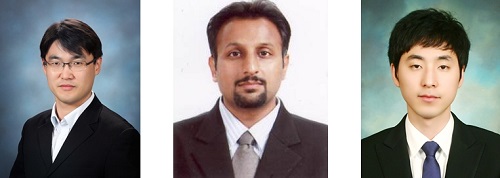Media Center
A multimedia mosaic of moments at GIST
GIST Excellence
[Press release] Researchers led by Professor Myung-Han Yoon develops a highly-efficient reusable absorbent for mercury
- 엘리스 리
- REG_DATE : 2016.07.11
- HIT : 1164
Researchers led by Professor Myung-Han Yoon
develops a highly-efficient reusable absorbent for mercury

Researchers led by Professor Myung-Han Yoon of the School of Materials Science and Engineering, Professor Sukwon Hong from the Department of Chemistry, and Professor Seunghee Han of the School of Earth Sciences and Environmental Engineering have collaborated to develop a highly-efficient reusable adsorbent for mercury that can be easily mass produced. This reusable adsorbent material can remove 90% of mercury from the water. Unlike a conventional disposable adsorbent, the new material is expected to be cost effective and capable of even removing highly acidic pollutants.

Image. (A). Coating conductive polymer onto a fibrous substrate to make a large-area adsorbent. (B) A graph showing an efficiency of 90% or more in removing mercury ions from water even after five recyclings..
The researchers used a simple and environmentally friendly method of polymerization to synthesize a complex cellulose material that has a complex micro-nano structure. The absorbent was able to remove more than 90% of mercury from highly contaminated water (50~250ppm mercury) in about an hour. They then recycled the adsorbent using a simple acid treatment and reused it five times while still being able to remove more than 90% removal of the contaminants.
Professor Myung-Han Yoon said, “This material is expected to be utilized in a variety of ways within industries that use or dispose of mercury.”
Their research was published in the online version of Journal of Material Chemistry A on June 23, 2016.